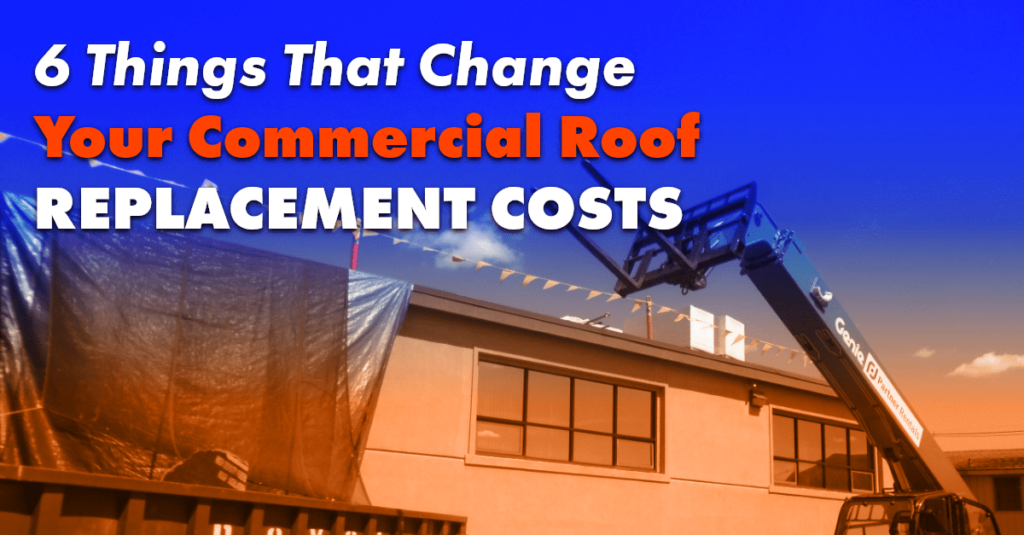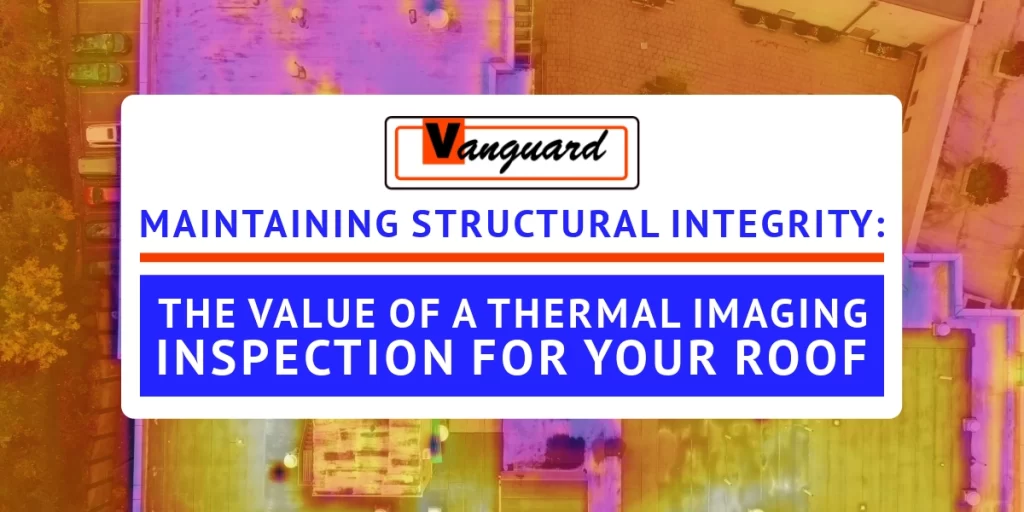The budget line item, “commercial building roof replacement cost,” has probably haunted you through many a finance meeting. Before your next meeting, take a look at six things that affect your costs for the substantial but necessary expense of replacing your commercial roof.
Choose Wisely
The most important decision you can make regarding your commercial building roof replacement is the contractor you line up to do the work. That contractor can control many of the costs if you communicate clearly and work well ahead of time to prepare for the project.
Still, a commercial roofer has to deal with your company’s needs, plus many factors beyond anyone’s control. With enough planning time and a carefully prepared project timeline, you and your roofer can complete the full roof replacement with no expensive surprises.
Let’s start with five factors nobody can change.
6. Roof Type
Most commercial roofs are low-slope designs, which means you are replacing your roof with one of these popular materials:
- TPO, PVC, and other single-ply systems
- EPDM
- Mod-Bit
- BUR
Your commercial roof is unique. Your roofer has to deal with structures built onto it (signs, window washing equipment, ventilators) and HVAC elements sitting on it. Your commercial roof might be small in square footage or larger than several football fields. All of these, plus local climate, affect costs.
5. Roof Access
If all you can offer your roofer is a single roof hatch, expect to pay for materials to be lifted by crane to your roof. Suppose you have no staging space below (part of an employee parking lot, available street parking, etc.). In that case, you will also pay for just-in-time delivery of the various needed materials.
Similarly, your building may be situated so trailer trucks or panel trucks cannot easily reach ideal loading and unloading areas. Every foot materials have to move horizontally or vertically, adding time and cost.
Conditions and costs worsen, too, the taller your building is. Careful scheduling to gain unlimited access to freight elevators or to safely crane materials skyward may mean crews work through weekends, adding to labor charges.
4. Wind Loads
Predominant wind direction and wind loads significantly affect installation procedures. Wind loads are a combination of wind speed and force on your roof; wind uplift is a function of wind load. Mechanical fasteners, hurricane clips, and other measures may be needed to address the potential for loss of your roof in high winds.
3. Code Requirements
Your building sits where it sits; you have no choice but to follow local building codes. Most municipal codes follow the International Building Code or IBC, which is handy because most roofing contractors know that set of standards very well.
Building codes change in response to weather emergencies and materials developments. Your new roof must be compliant with the most recent codes.
2. What Lies Beneath
Unless you were personally involved in the last roof (20? 30? 40 years ago?), you can only deal with what you inherited. The condition of your commercial property’s roof deck dramatically influences the costs of a full roof replacement.
Many issues may be uncovered when your roofer tears off the old roof. Your roof deck could have a host of problems:
- Structural flaws with the steel or wood roofing members
- Rust or rot in vital components
- Crumbling or damp concrete decking
- Rotted wood decking
- Damp insulation
- Wrongly sloped insulation
- Cracked or damaged cover board
A reputable commercial roofer will never offer to bury the defects beneath a sparkling new roof. All those ills must be resolved, and each problem requires its own set of solutions. Costs can mount when sad truths are exposed.
Your roofer can prevent some of this sting by taking core samples, performing tests, and physically crawling into the roof deck. Then the bad news, whatever it is, can be built into your budget. Better to cure everything now than to pay for spot repairs for the next 40 years.
Those five factors are beyond the ability of your roofer and your company to influence or change. The last item is very much under your control. It is with this last factor that your roofer can help you the most, providing current pricing and offering great suggestions to make the most of your investment.
1. Materials
The materials you and your budget select greatly influence the roof’s replacement cost. If your old roof was a 50-year-old Built-Up Roof (BUR), your roofer might recommend an energy-efficient, sleek single-ply replacement. The replacement’s initial cost may be higher compared to a new BUR roof, but its benefits (lower maintenance, longer life, fewer repairs) will far outweigh the expense.
Please contact us today at Vanguard Roofing so we may have the opportunity to help you plan for roof succession. Our services also include snow and ice removal, roof repair, and roof maintenance plans.



